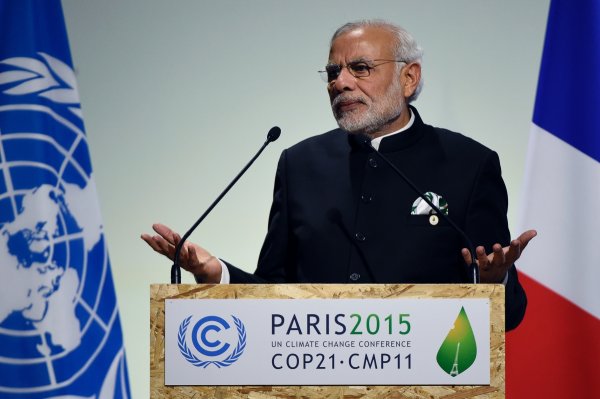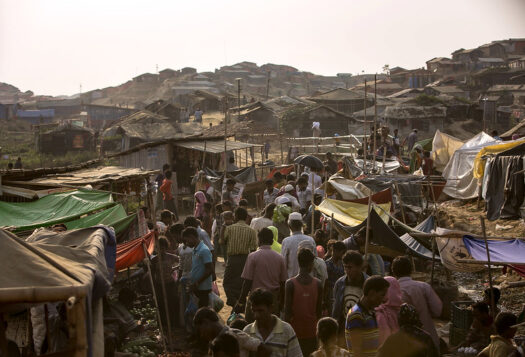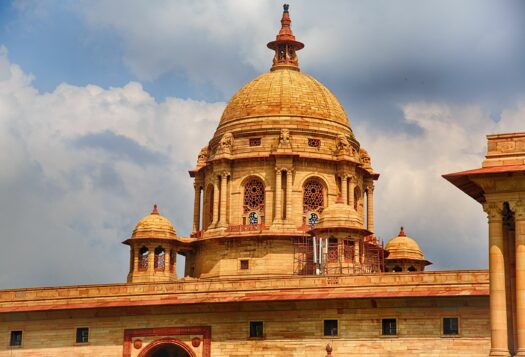
As the earth heats up every year, the international community has begun to warm up to the idea of aligning their climate blueprints with their foreign policies. As the developing countries pushed for broader involvement from developed nations at the recently concluded UN Framework Convention on Climate Change (UNCC) in Paris, India once again became the spokesperson of the developing world, and is punching above its weight in its contribution to climate change mitigation.
While the world is talking about reducing carbon emissions, developing nations are facing the seemingly oxymoronic dilemma of combining development with environment-friendly policies. In its attempt to integrate the two, India submitted its document for action on climate change, the Intended Nationally Determined Contribution (INDC), in October 2015. Submitted by 186 countries, this document details how a country plans to tackle climate change, keeping in mind domestic realities.
India’s willingness and commitment to lead the cause for climate change is being commended by world leaders. Critics, however, dismiss some of India’s proposed actions, such as its renewable energy targets, as being “overambitious.” India’s climate plan, which has been hailed by some as being better than the United States and the European Union, aims to reconcile the development versus sustainability debate by focusing on three major areas: increasing use of alternative energy resources for power generation, afforestation, and tapping foreign investors to fund its green projects.
The main highlight of India’s INDC is its commitment to reduce its emission intensity by 33-35 percent over 2005 levels by 2030. Emission intensity is defined as the measure of emissions caused relative to economic output produced. So it is not actually cutting down on its emissions, but rather reducing its carbon intensity. India realizes its limitations as a growing economy, and has hence departed from the norm set by the developed countries and carved out its own path. Instead of centring its policy around consumption, it has chosen to focus on increasing efficiency.
One of the most important things that India could do to achieve this ambitious target is to extend its LED distribution policy to appliances that consume the most energy. This policy focuses on distributing energy-efficient LED bulbs as replacement for incandescent bulbs and CFLs. Already showing a significant impact on increasing domestic savings, and cutting carbon emissions, this shift is helping to save 68 lakh kilowatts of energy each day. In January, this program was implemented across Maharashtra, Rajasthan, Delhi, Uttar Pradesh and Himachal Pradesh. It needs to be expanded beyond the urban areas, while the government could simultaneously subsidize LED lighting products. This program must be integrated with efforts for rural electrification, to ensure that clean energy is being produced.
India’s INDC further promises to increase its carbon sink by 2.5 to 3 billion tonnes of CO2 through afforestation. A carbon sink means anything that absorbs more carbon than it releases. So far, India’s policies have been effective. Commenting on India’s carbon sink, Minister of Environment, Forest and Climate Change Prakash Javadekar said that though pollution in India is increasing, its forest cover and capacity to absorb carbon dioxide is increasing too. A lot of schemes such as the Green Highways policy, School Nursery Yojana, and Green India Mission are being implemented to increase forest cover. However, effective implementation of these policies in the long run needs to be ensured.
Apart from this, another strategy for green development is increasing the use of alternative energy sources. While India reiterated that it needs to use coal to meet its energy needs, it pledged to generate 40 percent of its total installed power capacity through non-fossil fuel sources by 2030. Signalling a paradigm shift, PM Modi’s aggressive promotion of solar energy has led to the formation of a solar alliance, with 120 nations joining it. The aim of this alliance is to raise $400 million from member nations and multilateral agencies, to invest in solar energy research and use. This alliance could help in bringing electricity to rural India, and also connecting it to the solar grid. So far, India has invested an initial $30 million in setting up the alliance’s headquarters in India. “India has emerged as the natural leader for this alliance, with its ambitious targets to install 175GW of renewable energy by 2022,” said Arunabha Ghosh, of Council for Energy, Environment and Water, India.
However, for a developing nation like India, shifting to bio-mass, wind, hydro, or solar energy is a costly affair. To attract investments, India was seen lobbying at the Paris climate talks for transfer of technology and resources from developed nations. Putting the onus on developed nations, India declared that it needs $2.5 trillion between now and 2030 to implement its climate action plan. But the developed world has shown reluctance to offer clean technologies and financial assistance to India.
India believes in the concept of climate justice, that countries responsible for damaging the climate must own up to it, claim their responsibility, and contribute accordingly. Emphasizing the need to implement the polluter pays principle, India has urged the developed world to free up “carbon space” for the developing world to grow. But the developed world doesn’t agree. India has also proposed that intellectual property rights costs be financed through the Green Climate Fund.
However, differences between the developed and developing world that remain could lead to inaction on an issue that affects the whole world. Leaders must recognize that the real agenda of the climate talks cannot be forgotten in furthering the blame game. The Paris agreement has been signed, but it remains to be seen if the countries manage to set aside their differences, and deliver on the promises made.
***
Image: Alain Jocard-AFP, Getty


